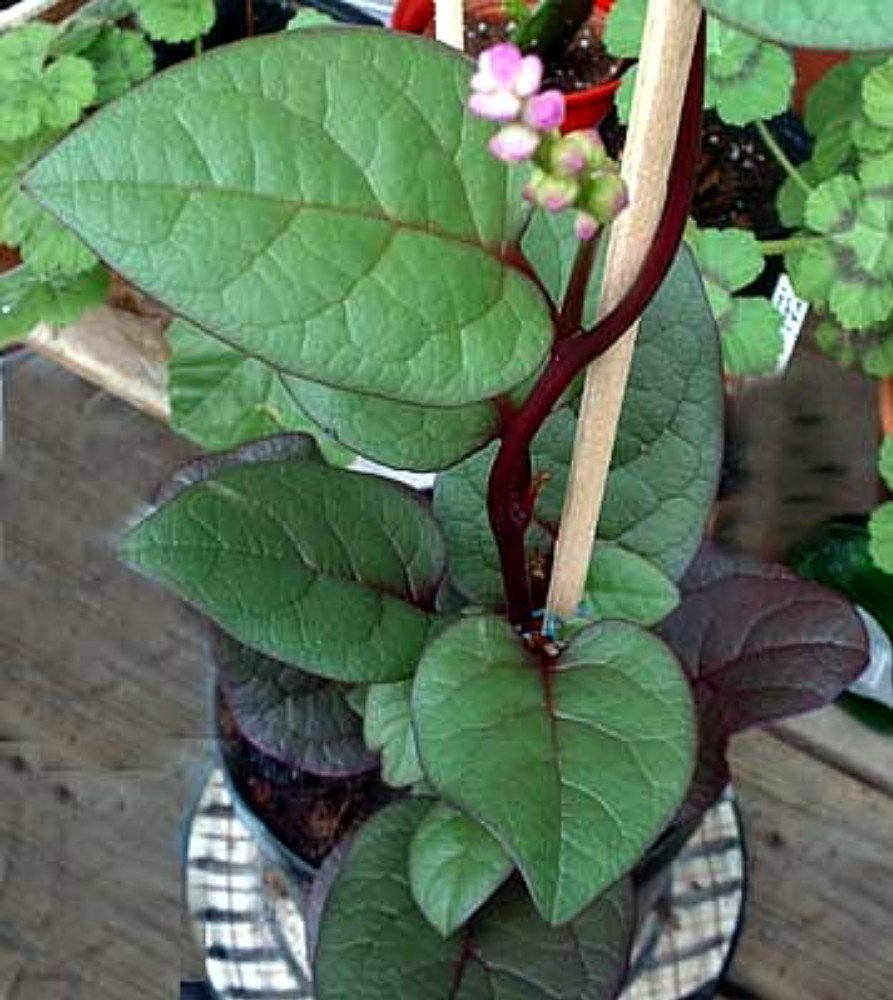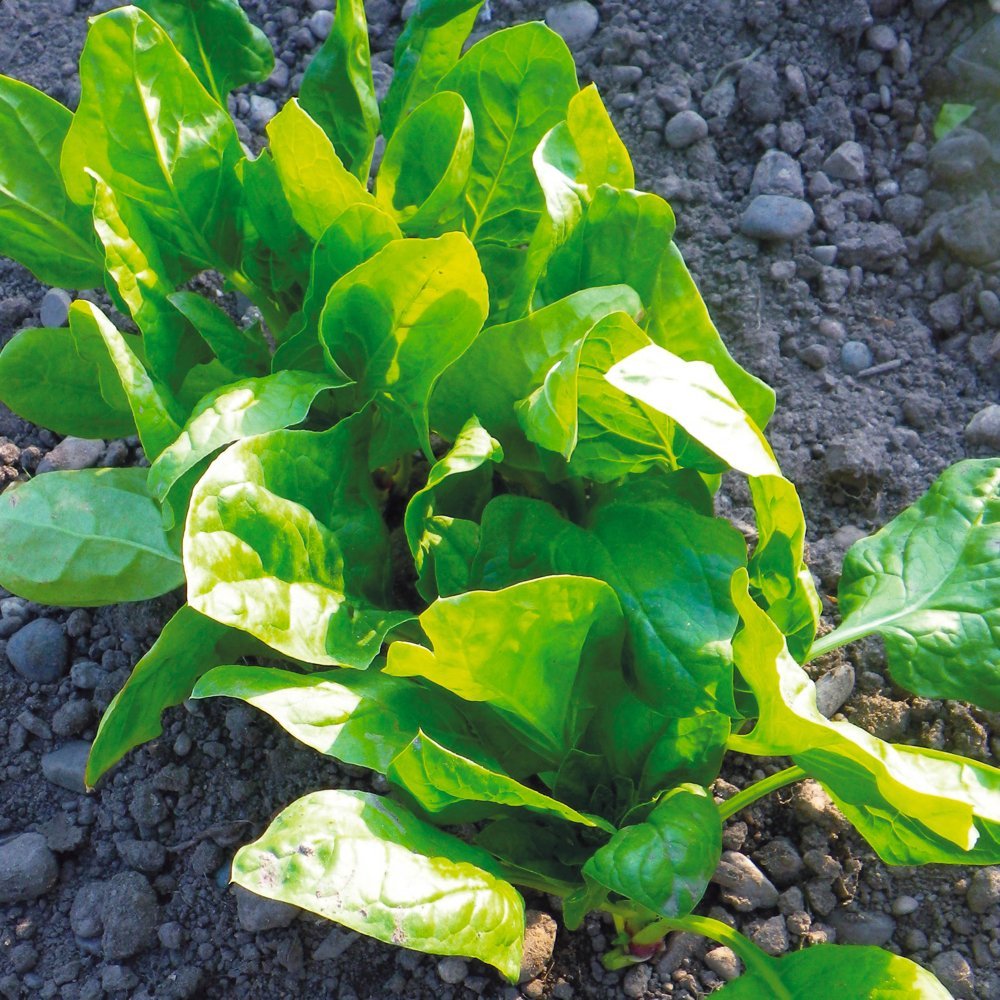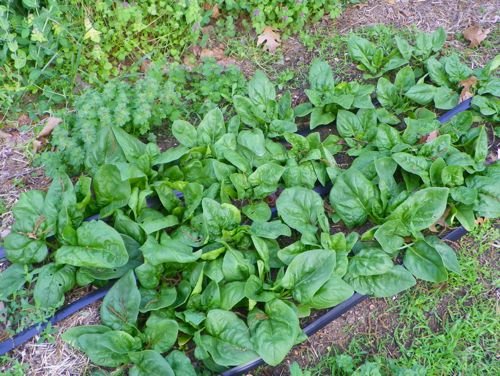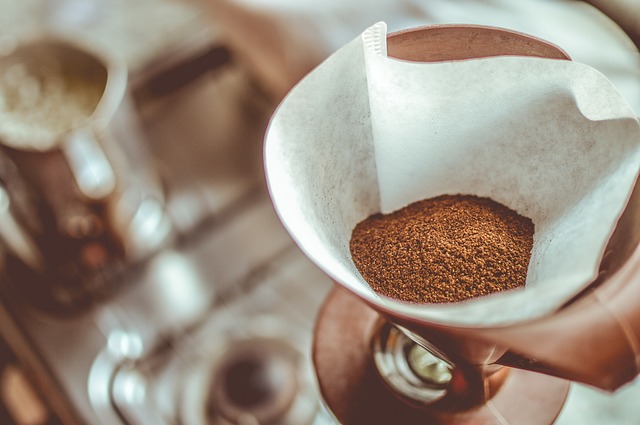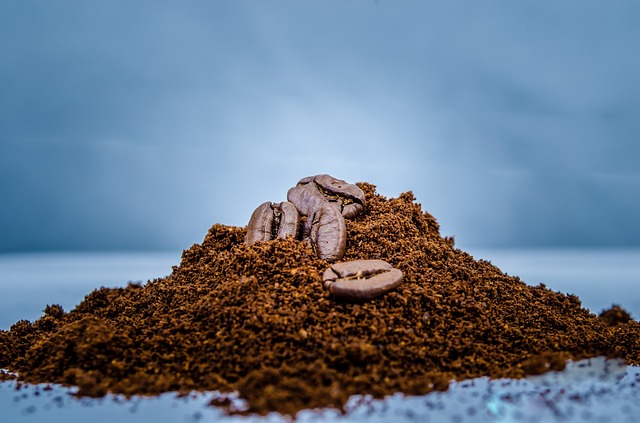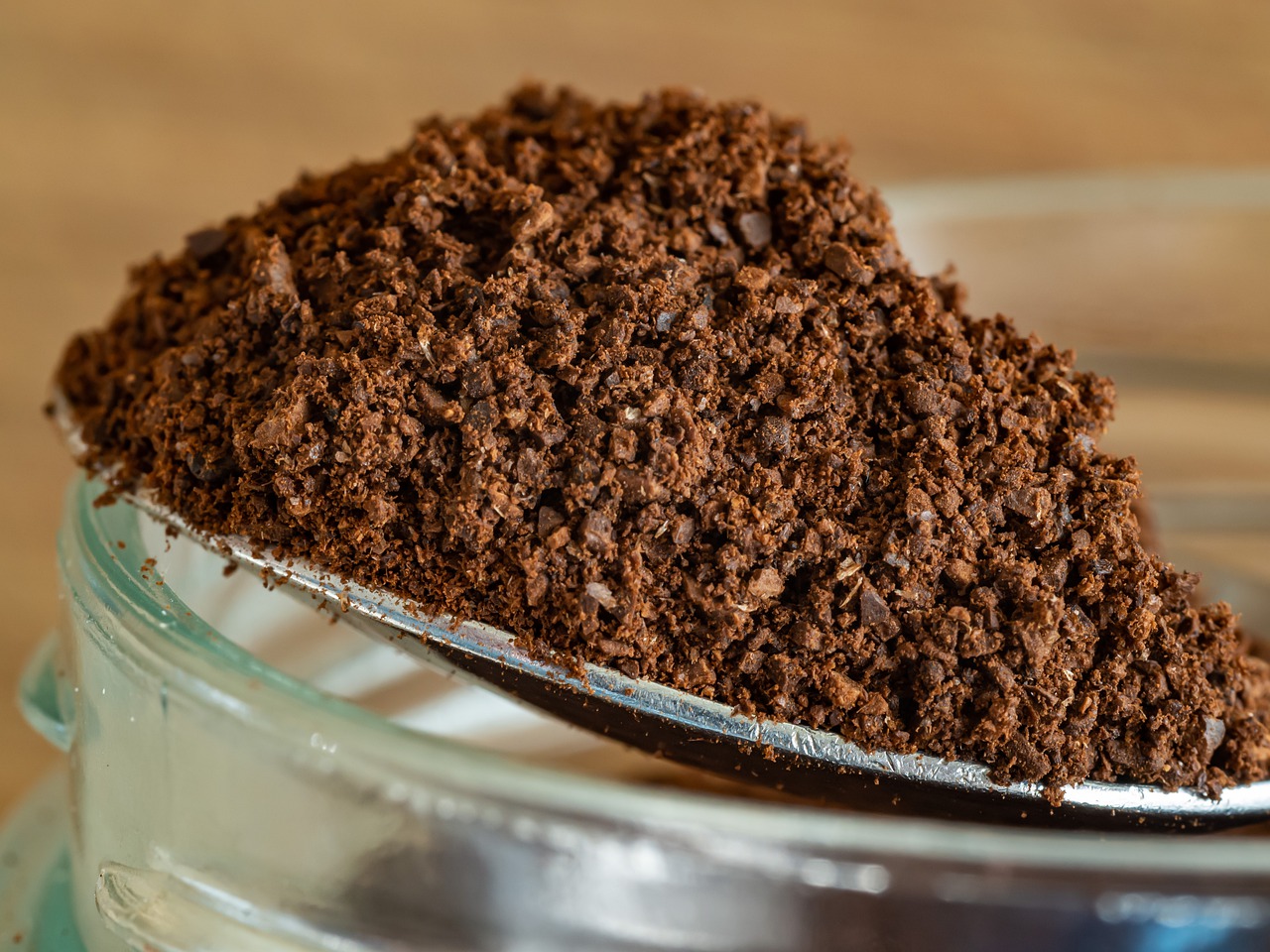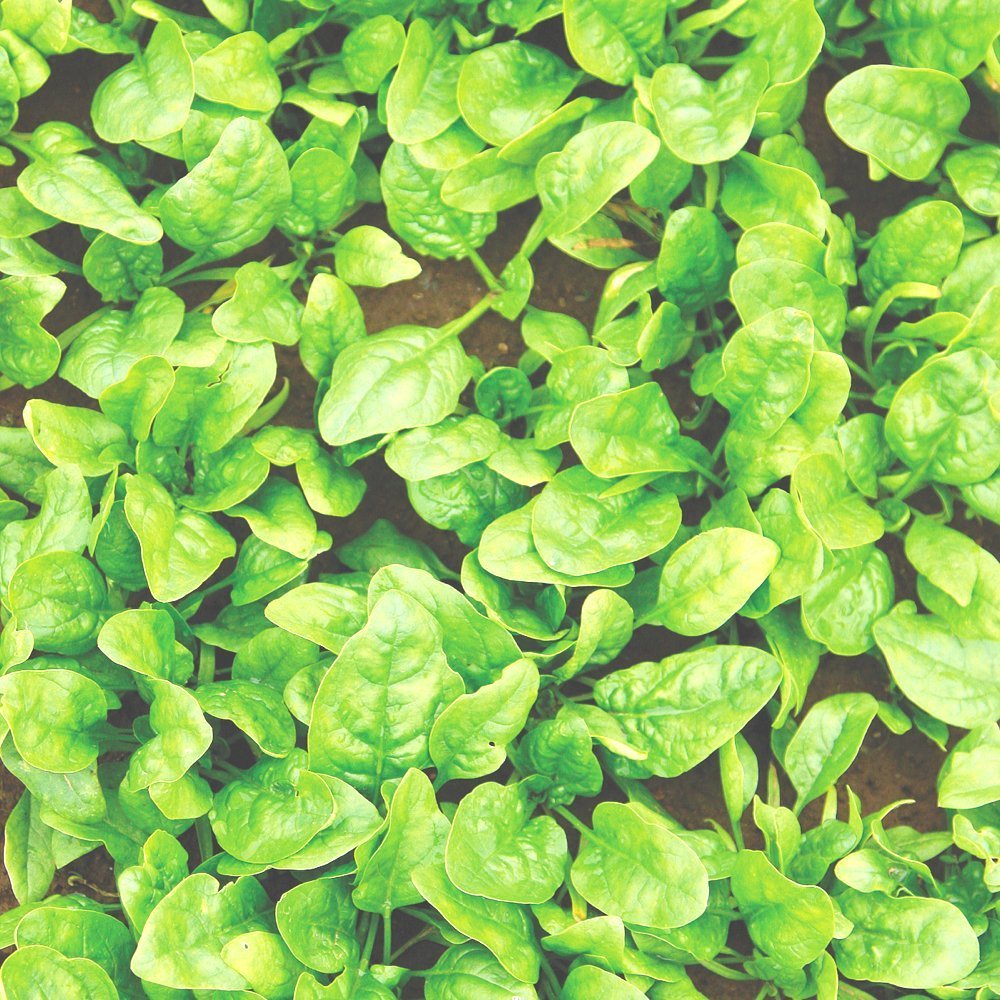
Spinach is an amazing leafy vegetable that is loaded with nutrients and many health benefits. While you can buy it from the supermarket, fresh, homegrown spinach, however, is the best option for a healthier lifestyle. Organic spinach is more nutrient-rich, tastes better and when it’s grown at home can save you time and cash.
The Main Health Benefits of Spinach
This vegetable has many benefits that you can enjoy from consuming it such as:
- It helps with diabetes management by increasing insulin sensitivity because it contains the antioxidant alpha-lipoic acid.
- Spinach has chlorophyll that has been suggested to help prevent cancer by effectively blocking carcinogens.
- It can help to prevent asthma since it has beta-carotene.
- Helping to lower your blood pressure.
- Preventing constipation and helping to balance the digestive system because it’s high in fiber.
- It is also high in vitamin A and vitamin C content making it fantastic for your skin and hair.
Not As Hard As You Might Think
Growing spinach is not as difficult as you might believe. It happens to be a quick grower so you can often enjoy a good yield in a short amount of time. Spinach prefers cool weather and usually grows well in organic soil during the spring and fall. However, some varieties can grow in the summer too, but it’s necessary to plant them under shade to avoid direct contact with sunlight.
Steps For Success
There are a few easy steps you’ll need to follow before you can enjoy your spinach at home:
1. Choosing the Perfect Place
The first and most crucial step is to choose the perfect place to grow. You’ll want to pick soil that is rich in organic matter and has a pH of 6.5 to 7. Be warned that soil which is too acidic is not suitable for growing this vegetable.
2. Planting Spinach
Plant the spinach in rows, with a distance of 12-inches between them. You should sow the seeds 0.5 inches deep every 6-inches along the rows. Also, cover this with 0.5-inches of fine mulch. Using a weed barrier helps spinach to grow nicely.
When planting seeds in the spring and summer, you’ll want to mix 2-3 lbs of alfalfa meal per 100 square feet into the soil you will be using. Alternatively, if you’ll be planting in the fall, mixing 1 lb of fish meal or some other animal-based nitrogen content into the soil would be a good idea.
3. Watering
Proper watering plays a crucial role if you want to be able to enjoy homegrown spinach. While other types of plants only need the soil to be watered, with spinach you’ll need to make sure that you water the leaves too.
Consistency is key with your watering because this leafy vegetable demands moist soil to grow properly. An efficient way to water it is from above, using a watering can, that way the leaves remain hydrated and the soil will stay damp.
4. Fertilizing
When considering fertilizers you will need to check the amount of nitrogen, phosphate, and potassium present in them. Nitrogen-rich fertilizers are the best choice for growing spinach. Using balanced fertilizers also can work well though too. Add the one you choose to the soil before planting so that the fertilizer breaks down a bit. After that, a water-soluble fertilizer should be used every two weeks so that the plant grows well.
5. Harvesting Spinach
When can you harvest your plants? Well, spinach can be picked when you see that the leaves have grown big enough to eat. It’s recommended that you cut off the outer leaves first which are larger and older and leave the remaining leaves on the plant to grow to size. Doing this will help to prevent bolting or flowering. If you see the plant starting to bolt, you can harvest the entire plant.
A Few Extra Tips
Below are a few important tips that can help you out:
- Cut old leaves off, when they start turning yellow.
- The best time for you to harvest your crop is during a frost because when exposed to cold, the spinach leaves start producing sugars that taste great.
- To protect the plant from snow, use frames or tunnels.
With the above info, you can get started growing and eating healthy foods. Whether for your kitchen garden, rooftop, terrace, or backyard vegetable patch spinach makes a great choice that anyone can grow.
Start Shopping for Spinach Seeds!
Does Copper Tape Stop Slugs?
Does copper tape stop slugs? The answer is yes. And you can use this simple solution to keep your plants safe from those slimy plant-eating pests. Repel Slimy Garden Invaders Without Harm Despite being relatively small and very slow-moving, slugs can do a lot of...
Coffee Grounds For Flowers
For many of us, there’s nothing we’d rather do than relax with a cup of coffee near the flower garden. Most people don’t realize however that the grounds used to make our coffee can help to increase the health and beauty of our garden. Here’s what you’ll need to know...
Coffee Grounds For Roses
Using coffee grounds for roses is a fabulous way to improve the health of your plants, helping them to produce those gorgeous flowers you’ve been dreaming of. But there are a few things you’ll need to know before getting started. Conditions Roses Prefer Roses do best...
Do Roses Like Coffee Grounds?
Do roses like coffee grounds? This is something many gardeners wonder about, especially since feeding roses coffee grounds has been a practice that’s been around a very long time. The answer is yes they do, and here’s what you’ll want to know. Roses And Acidic Soil...
How To Use Coffee Grounds For Grass
You’ll want to think twice before you toss your used coffee grounds in the trash every day. Those grounds can actually be used to feed and increase the health of your lawn. Here’s everything you’ll want to know about using coffee grounds for grass. Advantages Of...
Are Coffee Grounds Good For Grass?
Are coffee grounds good for grass? The answer is yes, so you may want to think twice before throwing away your used grounds after your morning cup of coffee. Instead, you can put them to work helping increase the beauty of your lawn. Benefits Of Using Coffee Grounds...
Are Worms Good For Your Lawn?
Despite their slimy looks worms are well-known for being very helpful in the garden. But are worms good for your lawn? You bet they are, and here’s why! Aeration As worms travel from place to place in the soil below your lawn, they create a maze of tunnels. And those...
How To Use Coffee Grounds For Snails
You don’t have to kill those annoying garden snails in order to keep them from eating your plants. In fact, you can use your morning coffee as a non-lethal weapon against them. When they come into contact with your coffee grounds snails will turn right around and...
How To Use Coffee Grounds For Ants
There are endless sprays and poisons you can use to get rid of ants. However, you won’t have to look any further than your morning cup of coffee if you’d like a repellent that doesn’t contain any harmful chemicals. By using coffee grounds ants will stay away and kids...
Which Plants Like Coffee Grounds?
While using coffee grounds in the garden offers quite a few benefits, they can be slightly acid and therefore not appropriate for all plants. So which plants like coffee grounds? Here’s what you’ll need to know. The Basics Of Coffee Grounds Coffee grounds contain...
Coffee Grounds And Hydrangeas
While many people love their hydrangeas, they often would love them even more if they were blue. Luckily the grounds from your morning cup of coffee can help you to achieve those gorgeous blue blooms. Here’s what you’ll need to know about coffee grounds and...
Coffee Grounds For Worms
Worms are an extremely helpful component of any compost bin or pile, not to mention worm farms. And it turns your morning cup of coffee can contribute to their diet. Using coffee grounds for worms is an easy way to keep them from heading to the local landfill while...
Using Coffee Grounds In The Garden
Your morning cup of coffee can help you to not only start your day off right, but in the garden as well. The grounds used to make it have many important properties that are ideal for both plants and soil. By using your coffee grounds in the garden you’ll be able to...
Using Coffee Grounds In Compost
It’s estimated that over two billion cups of coffee are consumed around the world each and every day. And that’s an enormous volume of grounds which are used and then tossed in the trash. By using coffee grounds in compost instead, you can help cut down on waste and...
Used Tea Bags In The Garden
Many people don’t realize that once you’ve had a cup of tea, your tea bag can be used again in quite a few other ways. There are actually many great uses for used tea bags in the garden. And here are some of the best! Free Natural Fertilizer The tea leaves and...
Used Tea Bags In The Compost
The next time you have your daily cup of tea, you may want to think twice about throwing that tea bag in the trash. Instead of contributing extra waste to landfills, you can help the environment and your garden by placing used tea bags in the compost. But before you...
5 Eco-Unfriendly Things You Do That Kill Your Garden
Any budding gardener out there wants to do the best for their garden and their plants. But are you accidentally causing it harm? Here are five eco-friendly things you do that kill your garden: Buying Plants that Contain Pesticides You may not use pesticides yourself...
7 Reasons You Need to Start Gardening Now
Looking for a fun hobby to help you relax? Get outside and get to work in a garden. Gardening has a variety of benefits for your mental, physical and spiritual health. Wondering how tending to plants can help you tend to your health? Here are seven ways gardening can...
Quick Tips To Speed Up Compost Times
Compost is an excellent soil conditioner and natural fertilizer. However, it can take quite a while for it to break down into a form that you can use. Luckily there are a handful of simple things you can do to help speed up compost times without much effort. Size In...
6 Common Types Of Soil Deficiency And How To Solve Them
Unfortunately, not all soil has the nutrients that plants need to grow and thrive. In some cases, it may be lacking in one area or another and therefore need a boost. Here are the most common types of soil deficiency and the best ways to deal with each of them....
